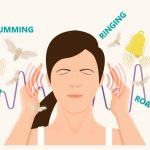Physical Therapy Recovery: How Movement Can Heal
Physical therapy recovery is an integral part of addiction healing. Here’s why. Recovery from addiction is a multifaceted journey that encompasses physical, mental, and emotional healing. One often overlooked aspect of this journey is the role of physical therapy. Integrating physical therapy into a recovery plan can significantly enhance healing, providing numerous benefits beyond physical rehabilitation. This article explores how movement and physical therapy contribute to recovery, highlighting the transformative power of this approach.
Physical Therapy Recovery Impacts Both Mind And Body
Recovery from addiction involves more than just overcoming the immediate physical and psychological effects of substance abuse. It requires rebuilding one’s entire life, which includes regaining physical strength and mobility. Physical therapy, often associated with rehabilitation after injuries or surgeries, plays a crucial role in recovery. By restoring physical function and improving overall well-being, Physical Therapy NYC can be a powerful tool in aiding individuals on their path to recovery.
Physical Therapy Recovery Is Great For Addicts
Physical therapy provide multiple advantages, which makes it to be helpful, especially when it comes to the treatment of addiction. Reflexively, many people in recovery have not taken care of their bodies for quite some time, which has caused diverse physical problems, including muscle fatigue, improper posture, and poor movement. Such challenges are tackled by physical therapy, which entails using exercises and treatment procedures that aim at regaining strength, flexibility, and function.
Physical Therapy Recovery Is Much Needed Self-Care
The ability to move from one place to another is of utmost importance in physical therapy. Patients with addiction are likely to be inactive because most of the time is spent inattentively waiting for the next fix. Physical therapists prescribe specific exercises and activities for patients to enhance their flexibility and use of joints in activities of daily living.
Physical Therapy Recovery Also Helps With Chronic Pain
In addition, physical therapy helps treat chronic pain, which is a familiar problem for people in recovery. For instance, some individuals use narcotics to manage their pain, and this results in addiction since the pain does not go away. PTs use different approaches like manual therapy, exercise prescription, and modalities, including ultrasound or electrical stimulation, to minimize pain and dependency on analgesics. Because PT is aimed at identifying the source of pain and managing it, it is more of a long-term approach to pain and its management.
Movement In Physical Therapy Recovery Produces Feel Good Hormones
Here, it must be noted that in addition to the physical well-being of the human body, physical therapy positively affects mental and emotional health. Another favorable effect of exercise, which is widely included in physical therapy, is related to endorphin production in the brain: endorphin is a chemical that helps fight pain and improve mood. The released energy in the form of exercises helps in managing symptoms of depression and anxiety, which are often experienced during recovery.
Exercising with the help of a physical therapist is good for morale since it gives the person a sense of purpose. By establishing physical goals, which are goals that one wants to achieve involving the body, one feels motivated because they feel that something is being accomplished. This forward momentum is essential in the preservation of the sober state and averting any form of relapse.
Physical therapy sessions also provide a framework of positive interaction and support that helps those receiving treatment develop healthy relationships with their therapists. Such therapeutic relationships help patients feel embraced and encouraged throughout their recovery processes so that they do not feel alone. The bond created with a physical therapist is quite helpful as it offers the person motivation and someone to answer to.
Real Life Physical Therapy Recovery Success Stories
The best way to explain the effectiveness of physical therapy in rehabilitation is by using examples. Sarah, an opioid addict for about five years was physically feeble and had constant back pain before she entered recovery.
Her physical therapist devised a detailed course of action that incorporated muscle-building exercises, flexibility exercises, and pain-relief practices. In the following months, Sarah managed to build up strength and minimize her pain significantly. These changes enhanced her self-esteem and mental strength to stay sober and work on her new life.
Likewise, John, a 42 years old male who was suffering from alcohol dependence syndrome, showed remarkable improvement through physical therapy. He suffered from poor balance and coordination, and all these were a result of many years of drinking.
John underwent a physical therapy regime and received a program that helped him have better balance and coordination, giving him back activities he used to enjoy, such as hiking or cycling. Such experiences were positive and supported his desire to remain sober and continue his efforts toward recovery while offering him healthy ways to cope with stress and engage in leisure activities.
Physical Therapy Recovery Conclusion
Physical therapy is an important and complex aspect of a holistic rehabilitation program; it has positive impacts that transcend physiotherapy. Thus, through a focus on physical problems, handling chronic pain, and enhancing mental and emotional health, physical therapy helps individuals in the path of recovery from alcohol dependency.
Such success examples as Sarah and John’s show the positive influence movement and physical therapy can have on recovery. For this reason, as we progress in acknowledging, accepting, and adopting the biophysical perspective of recovery, the inclusion of physical therapy in the treatment process will inevitably assume a progressively more significant role in the recovery process.
More Articles To Read About Physical Therapy Recovery
Physical Therapy For Accident Recovery





















